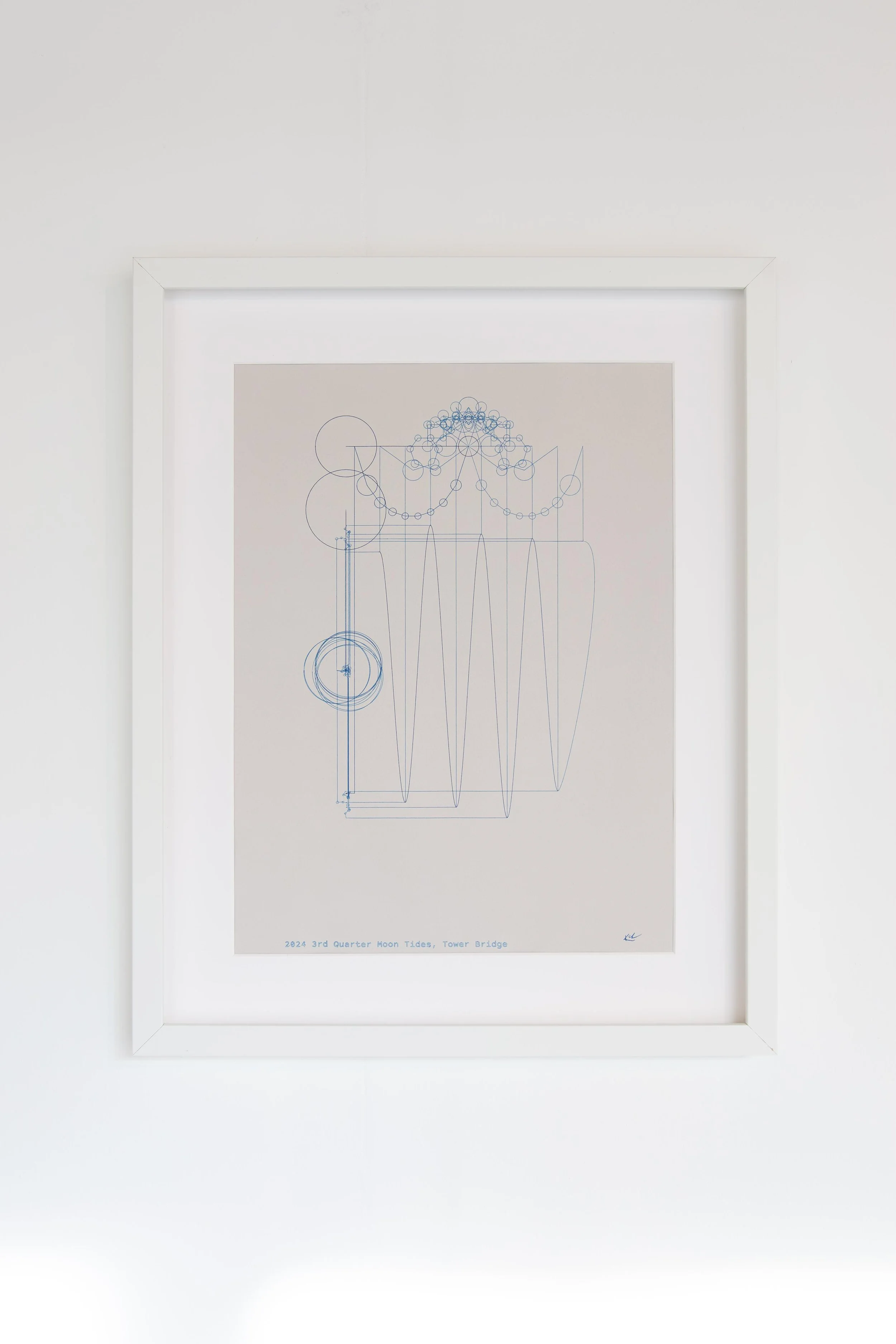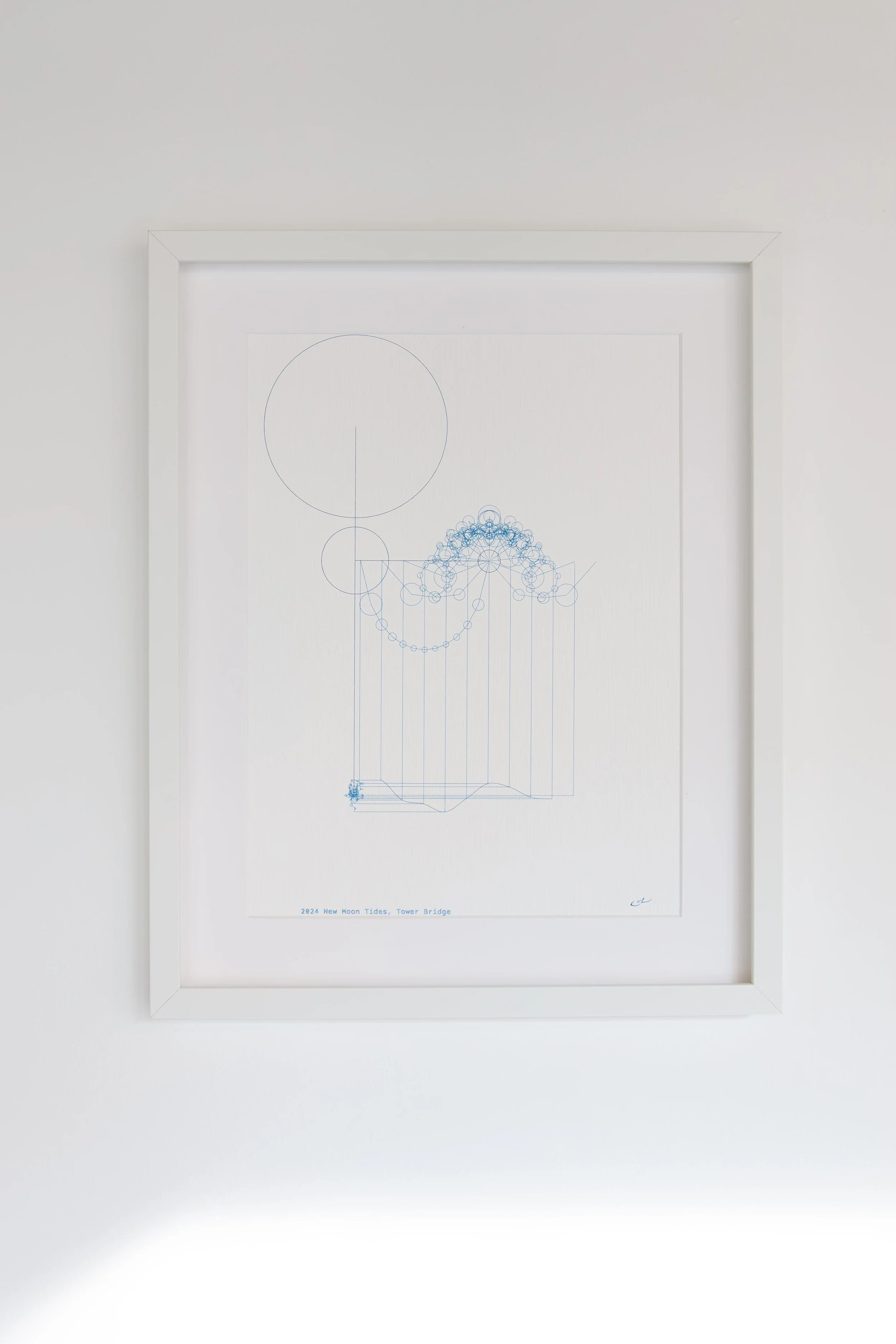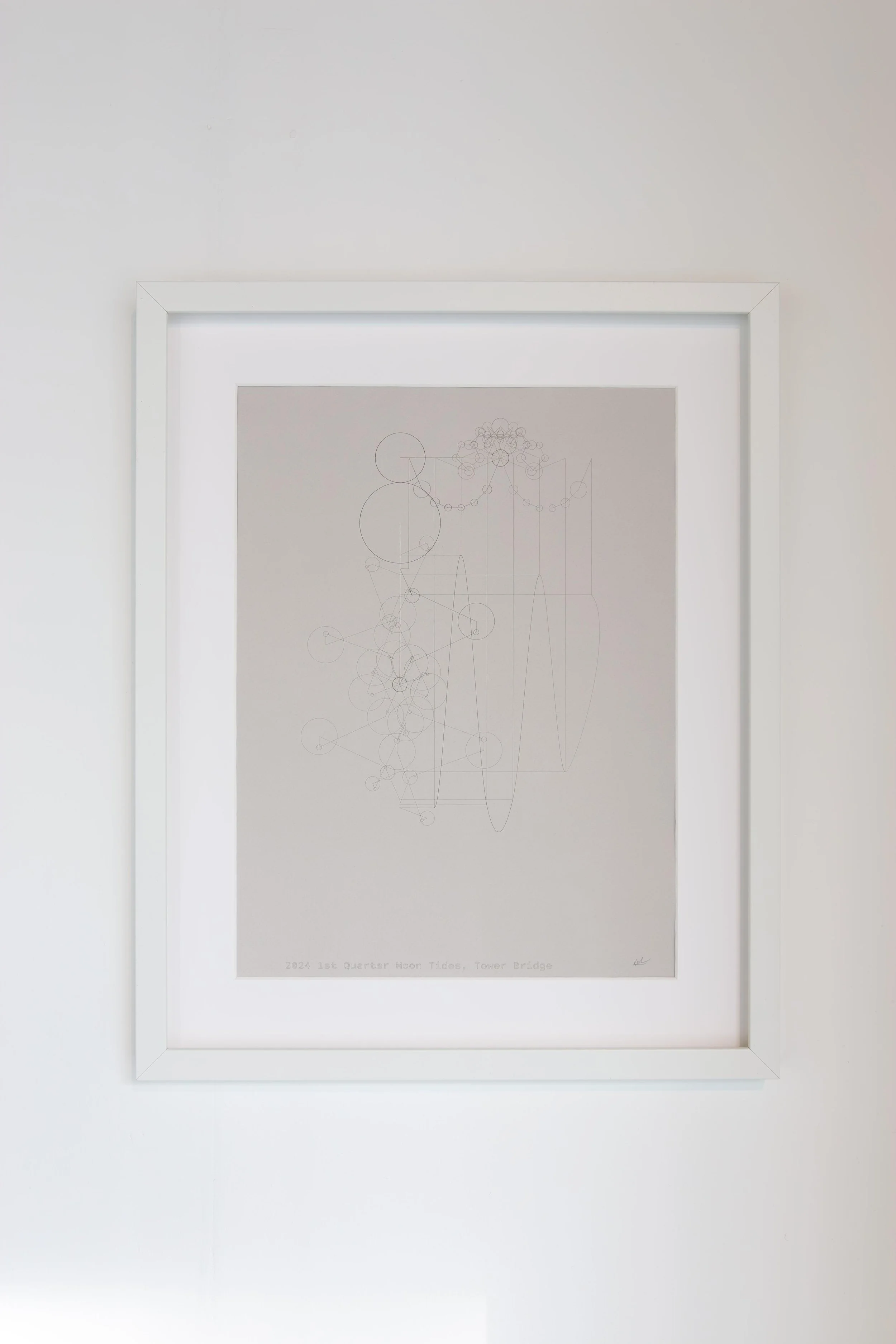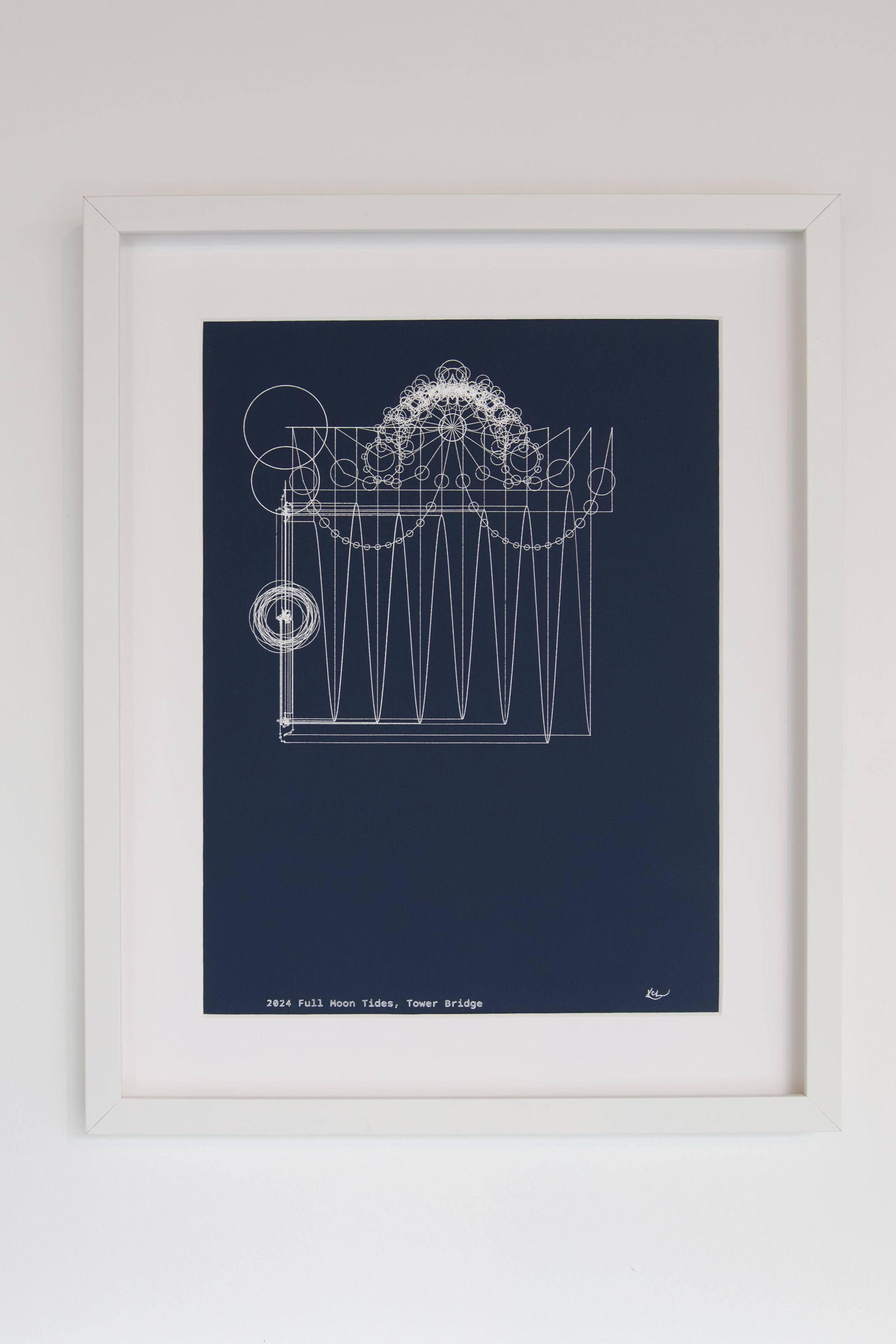Portfolio for FLUXUS Residency at CAPC, equivalent to 10 page documented submitted
Project 1 - 372.5~ Kinetic Sculpture visualising Tidal Data
Project 2 - Residency at Tides Institute and Museum of Art, Maine, Bay of Fundy
PROJECT 3 - HOROLOGY & HYDROLOGY
This series translates the tidal rhythms of the River Thames into generative drawings, merging data, time, and flow. A custom algorithm processes tidal data and specific moon phases to produce layered, organic forms, which are then rendered by a drawing machine. The resulting works reflect the cyclical pulse of the river — a convergence of celestial influence and earthly movement.
Rooted in the artist’s background in information systems and computational art, the series explores how technology can illuminate hidden natural patterns. Each drawing captures a singular moment in the river’s life, revealing its deep interconnection with the city and the broader environmental systems that shape our world.
Commissioned for IN SCOPE at Hypha Studios
Project 4 - Sounds of the Sea
Project 5 - Message in a Bottle
Immersive Installation visualising ocean pollution the Great Pacific Garbage Patch taking data from NOAA Station
Message in a Bottle (2022) is an immersive kinetic installation that animates wave height data from NOAA’s Station 46246—situated near the Great Pacific Garbage Patch—using 13 motors and recycled plastic bottles. The wave-height dataset (recorded every 30 minutes since 2010) is translated into physical movement: bottles sway in rhythm with the ocean’s shifting pulse. The work is accompanied by layered soundscapes, projections, and found plastic bottle recordings, creating a haunting, atmospheric reflection on ocean pollution and the sublime scale of ecological collapse
Involved Partners
NOAA (National Oceanic and Atmospheric Administration) – source of wave-height dataset
Eco Show Boat – advisory collaboration and field support
Impact of the Work
The installation provokes visceral engagement, transforming abstract environmental data into tangible, sensory experience. It heightens awareness of plastic pollution in marine systems by making wave dynamics—and the burden of waste—physically felt. The work has sparked dialogue around ocean health and data’s capacity to evoke emotional responses, bridging environmental science and artistic practice.
Why Relevant to this Challenge
Message in a Bottle demonstrates my ability to translate environmental datasets into immersive public experiences, using physical computing to reveal hidden systems. By animating ocean data, the work aligns with Magnetic’s emphasis on environmental engagement and site-contextualized practice. It prefigures my proposed Garonne project: real-time data → kinetic installation → public activation through workshops.
Project 6 - N.Y.Sea
Description
N.Y.Sea is a data-driven installation translating real-time oceanic data from the New York coastline into kinetic movement and generative sound. Using physical computing and custom algorithms, tidal patterns, salinity levels, and water temperature are transformed into responsive forms, creating a living interface between human viewers and marine systems. The work highlights water’s agency and the often-invisible systems governing coastal environments.
Involved Partners
DataXDesign, Open-Data.NYC , Brooklyn Arts Council
Impact of the Work:
N.Y.Sea invites audiences to experience oceanic forces as evolving, responsive systems, foregrounding environmental data as a tangible, sensory experience. It fostered public engagement with marine systems, contributing to conversations around coastal vulnerability and climate change. The project strengthened international presentation opportunities and interdisciplinary collaborations.
Why Relevant to this Challenge:
The project demonstrates my commitment to making hidden environmental systems visible and engaging. Using tidal data and physical computing to animate aquatic ecosystems directly aligns with the Magnetic residency’s focus on site-specific, environmental, and societal engagement. N.Y.Sea serves as precedent for the tidal data project I propose for the river Garonne.



